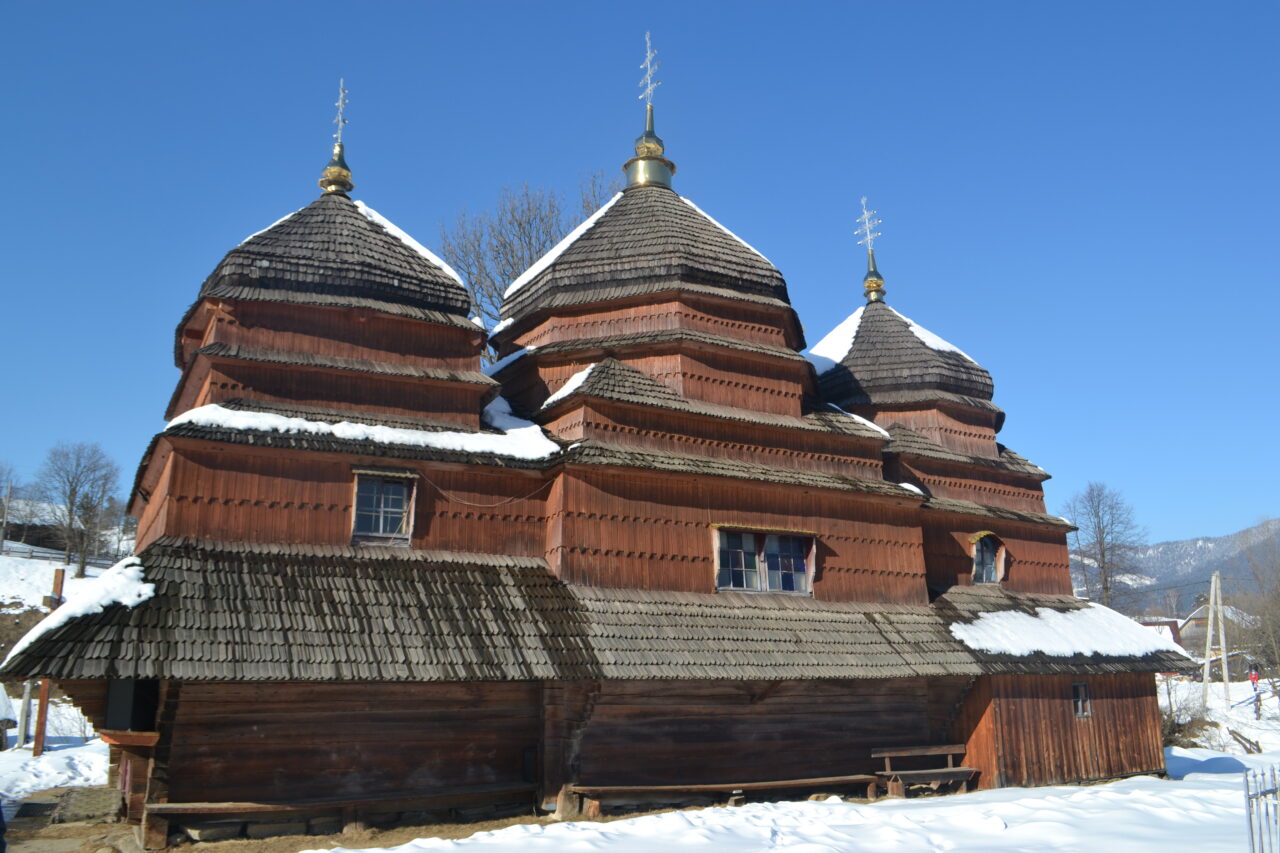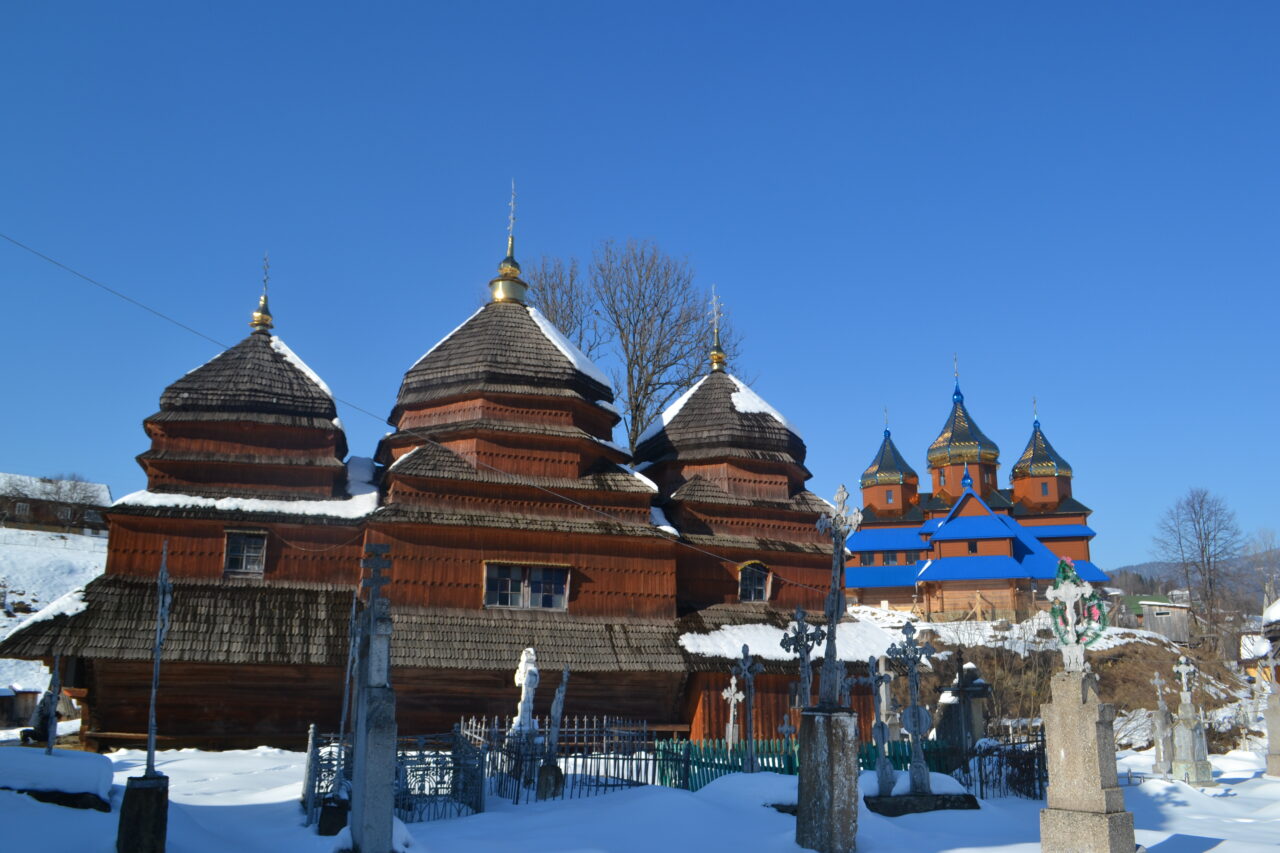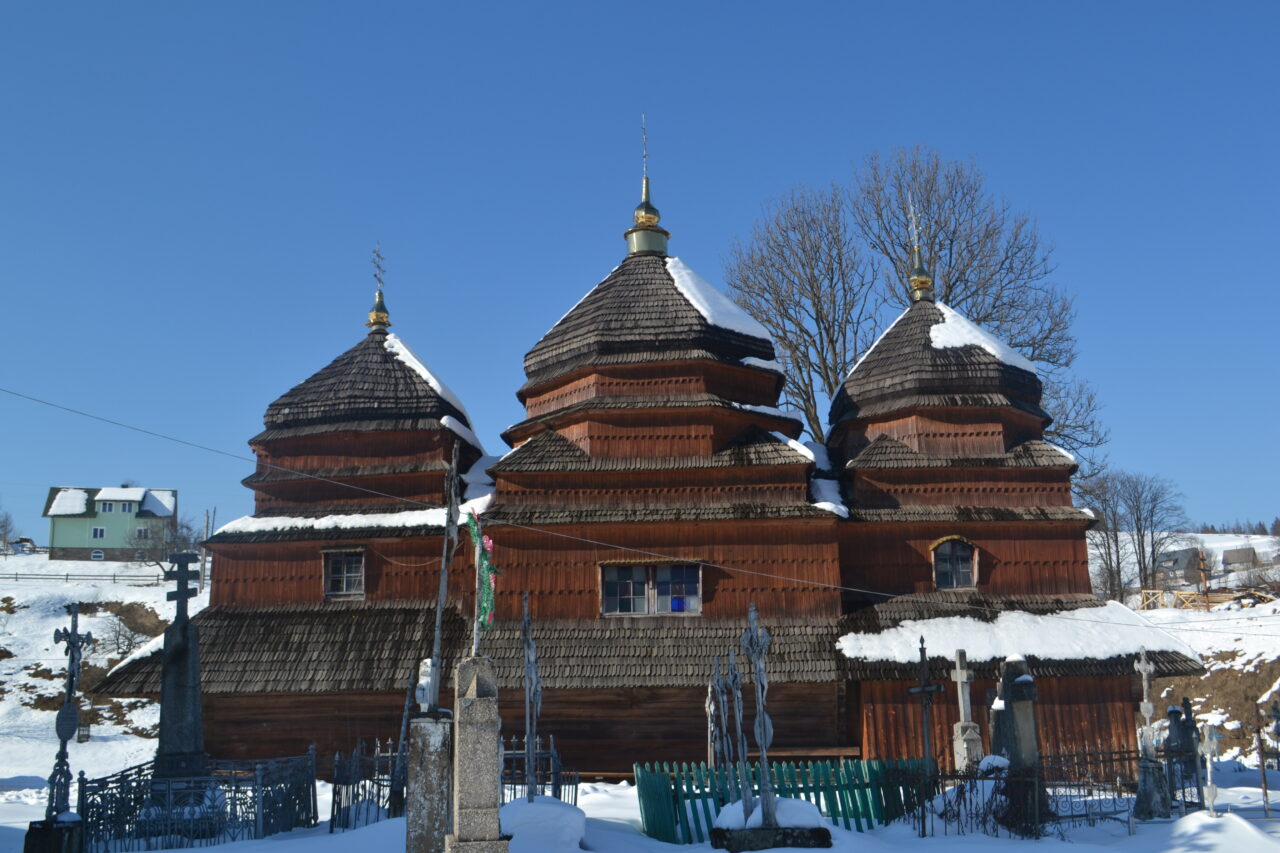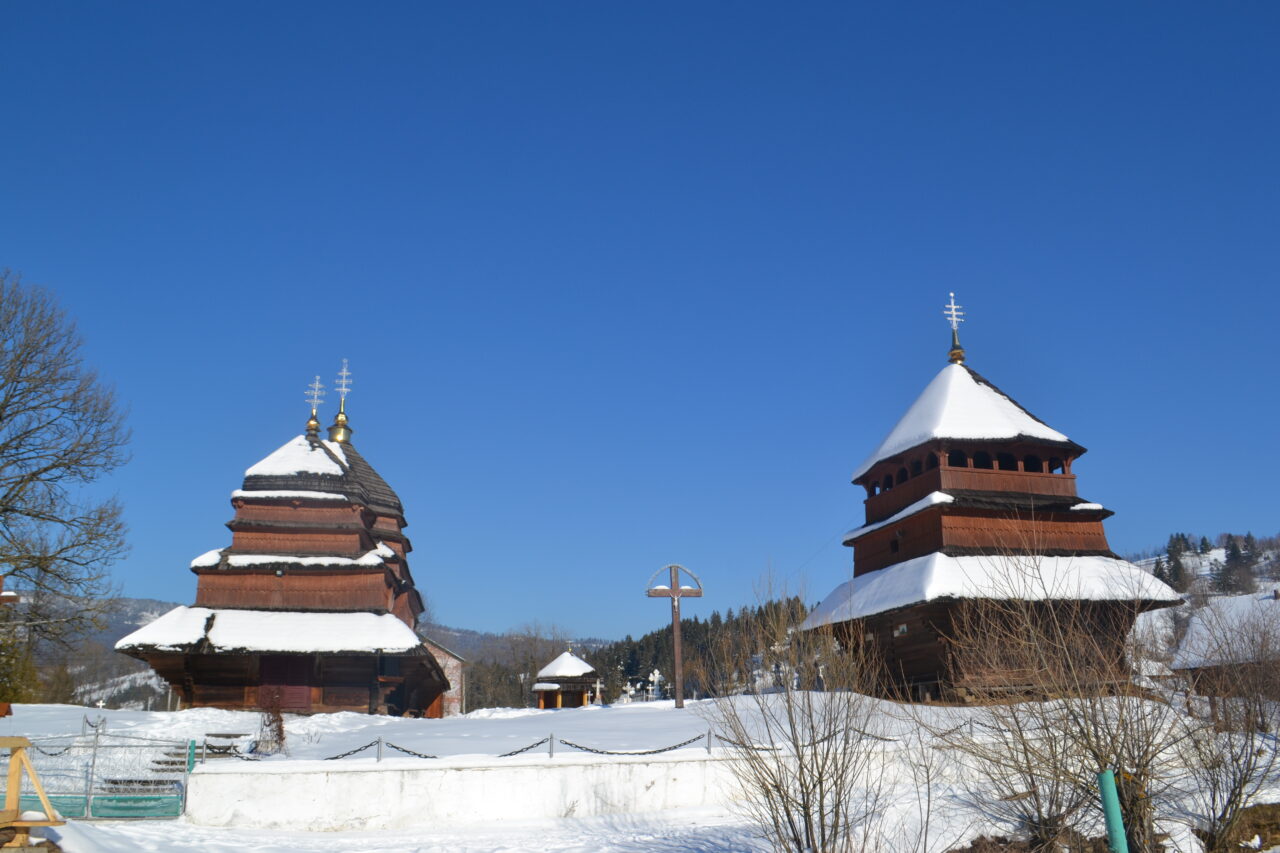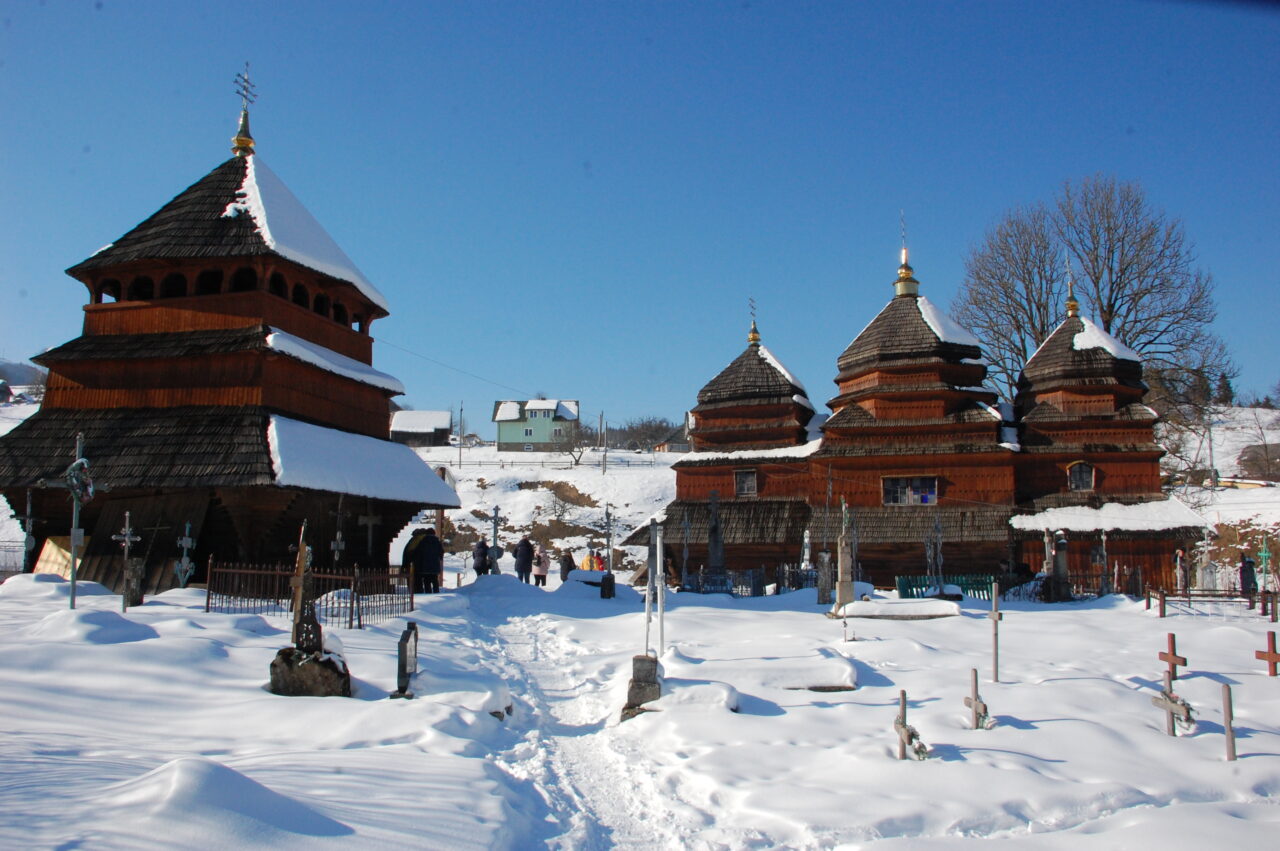If you want to escape from civilization really far away, Verkhnia Rozhanka looks like a good option. There is a resounding silence, clear air, agitated cardiogram of the Carpathians on the horizon, and tall spruces among the moss-covered stones and rocks. From the hills surrounding the village, it looks like a charming place, an oasis of peace and grace.
In such a place you want to see a fairy tale, and no less fabulous architecture. And there you can find it here. There is an ancient wooden church of the Descent of the Holy Spirit. You realize acutely how cool it is, in contrast to the neighboring temple. The Orthodox wooden in the anamnesis church of Peter and Paul the Apostles was recently consecrated, in the summer of 2019. And it was immediately completely spoilt by the renovation. Now everything in it is crying for salvation from this absolute distaste. They are the walls lined with rafters, and the domes in the ‘golden’ damask, and the Moscow octagonal crosses on the tops, and tortured with bright blue tin attic.
And if only you cross the road and climb a low hill, the heart calms down and the soul rests. As there is a beautiful and harmonious church of the Descent of the Holy Spirit.
It was built on the banks of the roaring Rozhanka River in 1804. The date is known exactly, to the month, it was July. How do we know? As there is an inscription claiming this on the temple.
Stylistically, we have in front of us a typical Boiko church. It is built of spruce beams, three-story and three-log with a wide attic, so that the perishers don’t get wet during the rain, and are able to find some shade in the hot summer days. Once you see it, you clearly understand why the shrine has been granted with the status of an architectural monument of national importance. The only thing that distinguishes the temple from the canonical models is its orientation is the space. Not from east to west, as it is usually done, but from north to south.
Another interesting feature is the unusually shaped crosses on the shrine tops. Take a close look at them! They are three-armed, skillfully executed and absolutely harmonious.
As a church in Boiko region is supposed to, the temple has several picturesque bends. The octagonal end of the nave has a system of low refractions, based on two octagons, standing on each other’s’ tops, resting on the tetrahedral. The top above the altar is similar, only there is one octagon. Above the narthex we notice a tetrahedral on a tetrahedral.
The narthex, nave and altar in the church of the Descent of the Holy Spirit are square in plan. The small side rooms that surround the temple altar were probably also built in 1804.
There lived Hriodli barons in this area, the kings of the Beskyd forests. They were entrepreneurs and owned giant sawmills. And they were the ones who financially supported the beautiful church from the end of the 19th century until 1939. Nowadays their palace is well-preserved in the Skole town.
At the entrance to the shrine there is a metal sign ‘Dniester Security Society’. Thus, not only businessmen-barons took care of the temple, there were some different church benefactors, too.
Not far from the stairs leading to the churchyard from the street, there is a cute small square bell tower. It is two-tiered, wooden, and also with a wide attic. Its lower tier is made of log construction, and the upper tier is frame. The bell tower roof is completed with an octagonal tent.
The bell tower was built in 1877. The well-known researcher of wooden sacred architecture of Ukraine Vasyl Slobodian presents in his work ‘Inscriptions on wooden churches’ an inscription preserved of the temple wall: ‘This bell tower was built by Andrii Haladii at public expenses on the Father Hryhorii Humenny initiative’. It is difficult to see this inscription on your own, as it was partially covered with a stone cross, which was so old, that people transported it next to the bell tower to prevent it from falling.
In the 21st century the beautiful church was thoroughly restored by professionals.

